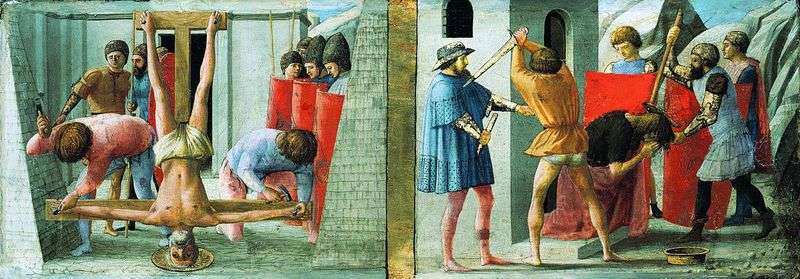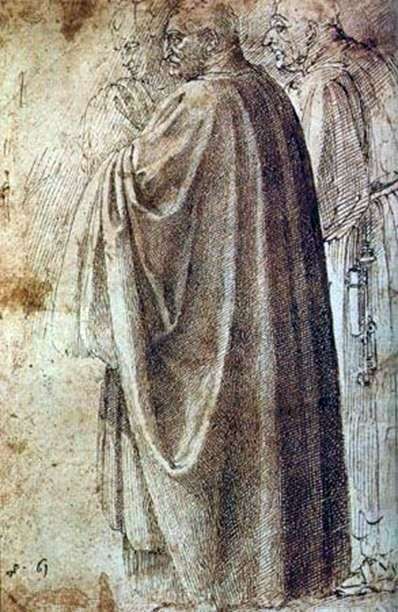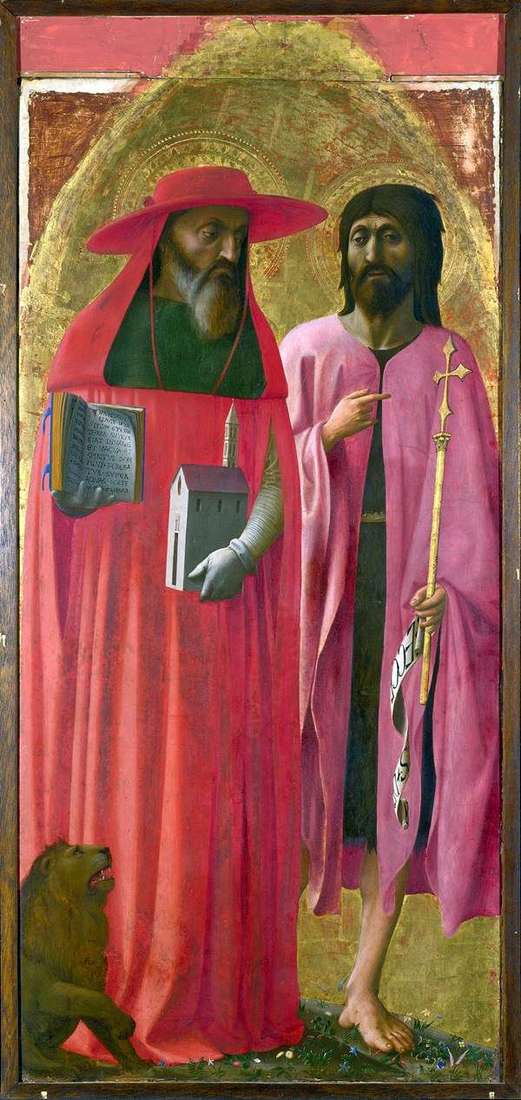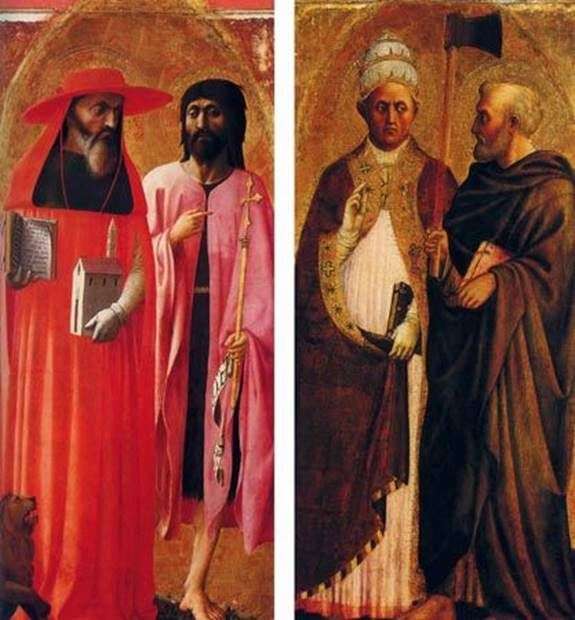
A portrait of a kneeling parishioner as well as possible confirms the enthusiastic words of Vasari about Masaccio’s ability to create “surprisingly vital and similar portraits.” For this portrait, the artist probably posed for the artist himself, while Masaccio did not idealize him at all. The face and clothes of the customer are written with bold transitions from light to shade, which gives this image volume. Under the fabrics with deep shadows of folds and bright highlights, the real, physically existing human body is vividly felt.
In general, this figure resembles a skillfully fashioned sculpture. Pictured against the background of the Corinthian pilaster, it takes its specific place in the composition. The persuasiveness with which the artist fills the mural space depends on his understanding of the laws of perspective. But Masaccio went further; he was able to combine knowledge of perspective with his intuitive vision of space and the ability to depict people in a naturalistic way. The rich parishioner praying on his knees is written not only serious and devout, but also quite earthly, as evidenced by such details as a double chin or an ear wrapped under a hat.
 The Crucifixion of Peter and the Beheading of John the Baptist by Masaccio
The Crucifixion of Peter and the Beheading of John the Baptist by Masaccio Lost paintings by Masaccio
Lost paintings by Masaccio La résurrection du fils de Théophile et de l’apôtre Pierre à la chaire – Masaccio
La résurrection du fils de Théophile et de l’apôtre Pierre à la chaire – Masaccio Holy Trinity by Masaccio
Holy Trinity by Masaccio Madonna and Child with Angels by Tommaso di Giovanni Masaccio
Madonna and Child with Angels by Tommaso di Giovanni Masaccio Saints Jerome and John the Baptist by Tommaso di Giovanni Masaccio
Saints Jerome and John the Baptist by Tommaso di Giovanni Masaccio Altar Obra by Masaccio
Altar Obra by Masaccio